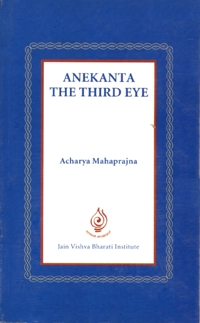
Attributes are of two kinds: samanya that is common and vishesh that is specific. The common attribute is found in the same manner everywhere, in the sentient as well as the insentient. The souls, being sentient are intangible and, matter, in spite of being the insentient is also intangible. The medium of motion (dharma astikaya) and the medium of rest (adharma astikaya) represent the insentient and the intangible. From this perspective then, the intangible soul and insentient ether are similar. Both are matterless and incorporeal.
Dharma astikaya is a substance but not corporeal, it is incorporeal. Many a time we say that the soul is not corporeal. But is dharma astikaya not incorporeal! There is a lot of similarity between the two. More similarities and fewer differences. The one who looks at the gross fact modes forgets the similarities and clings to the differences. That is why there are arguments, diverse traditions and conflicts. They take place on the basis of the gross modes of the object. In the outer world, similarities are few and difference many, while in the inner world differences are few and similarities more. Through meditation we want to develop our inner world so that our visions become so wise and blemishless that we are able to see the commonalities beneath the differences.
Kabir's son Kamaal went to the forest to cut grass. He did not come horne till late evening. Kabir got worried. The father reached the forest searching for his son. He saw Kamaal standing immobile like a stupid fellow. He was looking at the grass but not cutting it. Kabir scolded him. "What are you doing? Can you not see that the sun has set? You have not cut any grass?" Answered Kamaal, "How do I cut? Do I cut myself? Just as my breath keeps life within me, there is a breath running within these blades of grass too. Now how do I cut? Whom do I cut?" Now Kamaal became incapable of cutting grass.
Mahavir expressed the experience of similarity in the following way:
Tumamsi nama sachcheva jamhamtavam ti mannasi
"Man! The one who you want to kill is you yourself."
In this context, the following sentences of his experience of equality is significant:
Tumamsi nama sachcheva jam ajjaveyavvam ti mannasl
(The one, who you think is fit to be at your command, he is you indeed) Tumamsi nama vachcheva jam
artaveyavvam ti mannasi
(The one, who you think fit to punish, he is you indeed.)
Tumamsi nama vachcheva jam pariddhetavvam ti mannasi
(The one, who you think is fit to enslave, he is you indeed.)
Tumamsi nama vachcheva jam udveyavvam ti mannasi
(The one, who you think is fit to be killed, he is you indeed.)
The realization of this highest truth has been on the basis of anekanta. Only he can accept anekanta who is free from attachments and aversions. The one who has excessive attachments and aversions will never accept anekanta. Indeed anekanta is the philosophy of meditation, the philosophy of spiritual practice. The one in whom the sentient is free from passions, is blemishless, in him the vision of anekanta will rise, the wisdom of truth dawns, not in anybody else.
 Acharya Mahaprajna
Acharya Mahaprajna
